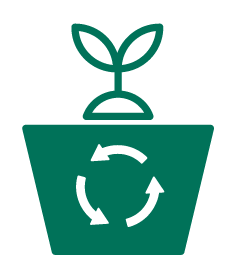 Composting food scraps and yard waste is an easy way to reduce your household’s climate impact and put food waste to good use! When organic material like food and yard waste decompose in a landfill it creates methane, a powerful greenhouse gas.
Composting food scraps and yard waste is an easy way to reduce your household’s climate impact and put food waste to good use! When organic material like food and yard waste decompose in a landfill it creates methane, a powerful greenhouse gas.
Communities across Washington are moving towards placing all organic waste in yard waste carts to divert this material from the landfill to help meet statewide greenhouse gas reduction goals. Learn more about these goals by visiting the
Organics Management Law webpage.

